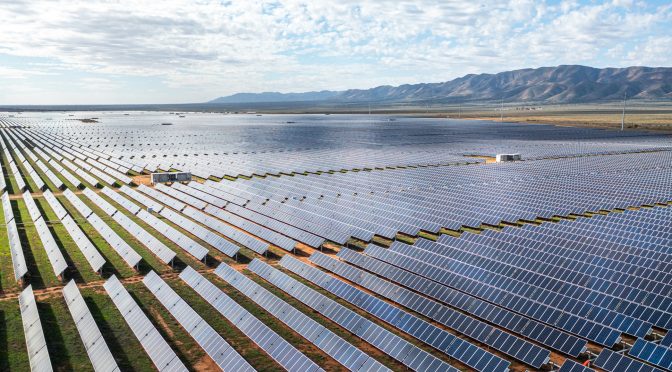A new report by the International Energy Agency (IEA) calls for the diversification of the solar energy supply chain, which is currently concentrated in Asia, and an increase in production in other countries – as EGP is doing in Catania – in order to meet decarbonization targets in time.
Over the last ten years, the photovoltaic supply chain has been predominantly concentrated in Asian markets, causing an imbalance that jeopardizes the safe transition to net zero emissions. This is the conclusion reached by the International Energy Agency (IEA), which has published “Solar PV Global Supply Chains”, its first special report dedicated to global photovoltaic supply chains.
The focus of the study stems from the current crisis caused not only by the conflict resulting from Russia’s invasion of Ukraine, but also by the strong economic recovery following the Covid pandemic, which has seen a sharp increase in demand that supply chains have been unable to meet adequately, resulting in extended lead times and higher prices.
The risks of a monopoly
According to the study, China’s share in all the key manufacturing phases of solar panels today exceeds 80%, and for key elements such as polysilicon and wafers, it is set to rise to over 95% in the coming years. The IEA highlighted the risks of this near-monopoly, beginning with the susceptibility to bottlenecks that could lead to price increases or delays in delivery times.
Moreover, in order to achieve the goal of zero emissions by 2050, the IEA estimates that annual additional capacity of photovoltaic energy worldwide will need to at least quadruple by 2030 and the Chinese industry alone will not be able to accommodate such growth.
There are also related issues to consider. Today Chinese factories are largely powered by power stations that use fossil fuels. In spite of the fact that solar panels only need between 4 and 8 months (out of a total lifetime of 25-30 years) to offset the amount of greenhouse gas emissions resulting from their production, manufacturing them in countries where the electricity generation mix is cleaner would further reduce their ecological footprint in terms of both production and transportation.
The benefits of geographical diversification
The Solar PV Global Supply Chains special report calls for a geographical diversification of panel production and makes a series of recommendations, aimed mainly at governments. These include: encouraging the building of factories in large industrial hubs, facilitating investments with appropriate tax policies, ensuring production that respects environmental and social sustainability, investing in technological research to improve panel performance and reduce their cost, and establishing regulations to encourage the recycling of materials in order to reduce the use and importation of raw materials, which in the case of rare-earth elements often originate from Asia.
The countries and companies that follow these recommendations, in addition to making the energy transition smoother and more resilient, will have the opportunity to create their own technological supply chains, which will have important positive economic effects, starting with employment. The IEA estimates that every Gigawatt of additional photovoltaic capacity has the potential to create 1,300 new jobs in the industry. Moreover, the agency also forecasts that new solar panel factories may be able to attract total investments of up to $120 billion by 2030.
The economic and environmental benefits increase if the panel manufacturers are also electricity producers, the Enel Group being a clear example of this.
A Gigafactory in the near future
With the TANGO (iTaliAN pv Giga factOry) project, our 3Sun facility in Catania will be transformed into Europe’s largest photovoltaic panel factory. For more than a decade this facility, which is also a research hub, has been making constant technological advances. In 2017 we began producing bifacial modules, increasing energy generating capacity by 15%. In 2019 the factory introduced Hetero-junction Technology (HJT), which enabled us to set a new record for commercial cell efficiency, achieving a light conversion rate of 24.63%. On the innovation front, efforts are now being focused on sustainability and the reduction of CO2 emissions, the traceability of materials, increasing the efficiency of the productive process, reducing waste and recycling the modules at the end of their useful life. But our most pioneering research is centered on Tandem technology, which is composed of two cells: a perovskite cell grafted onto one of our industrial cells. This innovative technology is opening up new, previously unimaginable possibilities in terms of efficiency.


